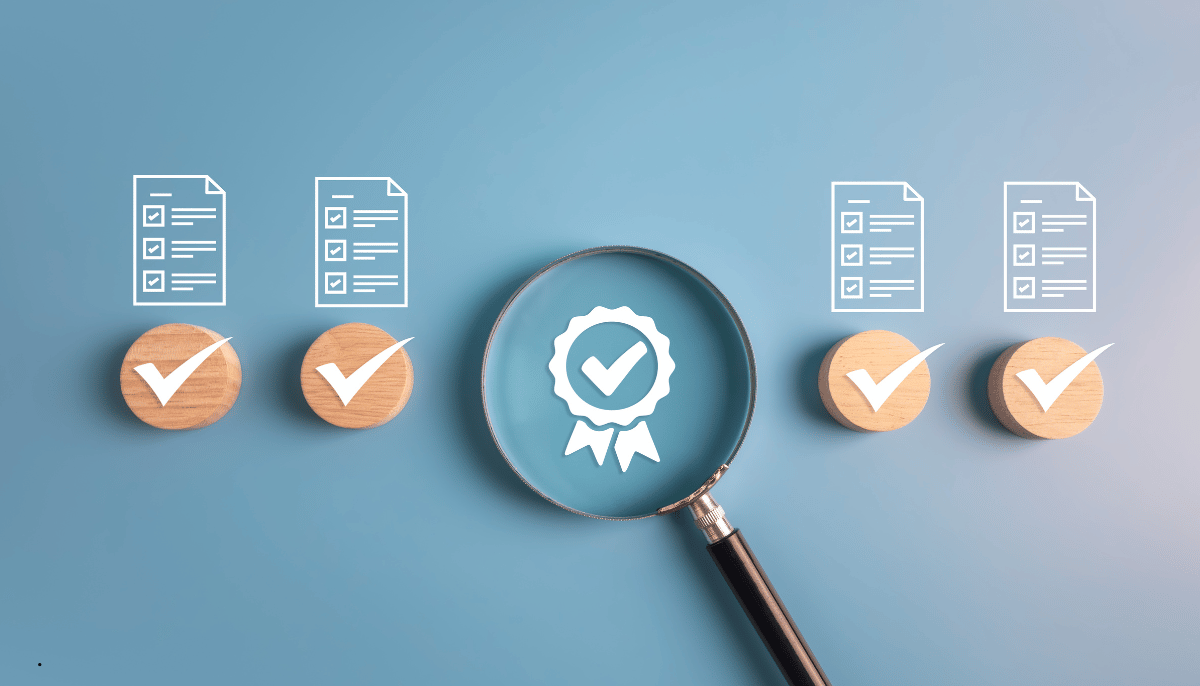Summary:
A SOC 2 readiness assessment is crucial for identifying and addressing security gaps before an audit, acting as a practice exam to ensure compliance and avoid costly surprises. By using a 30-point checklist covering essential compliance controls, organizations can save money, reduce stress, and expedite certification. This proactive approach not only prepares companies for audits but also strengthens their overall security posture. SecureLeap offers expertise to guide businesses through this process, ensuring smoother audits and robust security programs.
SOC2 Readiness Assessment 101: Self-Check Your Gaps Before the Auditor Does
It's audit day, and you're sitting across from your auditor feeling like you're about to take the most important test of your career, except you're not sure what's on it. Sound familiar?
If you're a CTO at a growing company, chances are you've been tasked with getting SOC 2 or ISO 27001 certification. And if you're like most technical leaders, you might be wondering where to even start. The good news? You don't have to go in blind.
Think of a readiness assessment as your practice exam. It's your chance to identify gaps, fix issues, and gather evidence before an auditor ever steps foot in your (virtual) door. Today, we'll walk through a practical 30-point checklist that covers essential compliance controls, plus show you some approaches that can help streamline your preparation.
Why Bother with a Self-Assessment?
Before we dive into the checklist, let's talk about why this matters. A readiness assessment isn't just busywork. It's your insurance policy against expensive surprises.
When you catch gaps early, you can:
- Save money: Finding issues during an audit can mean delays, re-audits, and higher costs
- Reduce stress: Nothing beats the confidence of knowing you're prepared
- Speed up certification: Well-prepared organizations typically move through audits 40-60% faster
- Build better security: The process often reveals genuine security improvements
Your 30-Point Pre-Audit Checklist
Access Management & Identity (Points 1-8)
1. User Access Reviews
- What to check: Do you regularly review who has access to what?
- Ideal scenario: Quarterly access reviews with documented approval from data owners
- Red flag: Former employees still have active accounts
2. Multi-Factor Authentication (MFA)
- What to check: Is MFA enabled for all administrative and sensitive accounts?
- Ideal scenario: MFA enforced across all systems with centralized identity management
- Red flag: Admin accounts without MFA
3. Password Policies
- What to check: Do you enforce strong password requirements?
- Ideal scenario: Password managers deployed company-wide with strong complexity requirements
- Red flag: No minimum complexity requirements
4. Privileged Access Management
- What to check: Are administrative privileges limited and monitored?
- Ideal scenario: Just-in-time access with approval workflows and session recording
- Red flag: Too many users with admin rights
5. Account Provisioning Process
- What to check: Is there a formal process for creating/modifying user accounts?
- Ideal scenario: Automated provisioning tied to HR systems with manager approval
- Red flag: No documented process exists
6. Access Termination
- What to check: Are accounts disabled immediately when employees leave?
- Ideal scenario: HR system automatically triggers account deactivation within hours
- Red flag: Delayed account deactivation
7. Service Account Management
- What to check: Are non-human accounts (APIs, services) properly managed?
- Ideal scenario: Service accounts use certificate-based authentication with rotation
- Red flag: Shared service account credentials
8. Remote Access Controls
- What to check: Is remote access to systems properly secured and monitored?
- Ideal scenario: Zero-trust network with device compliance checking
- Red flag: Unrestricted remote access
Data Protection & Encryption (Points 9-14)
9. Data Classification
- What to check: Do you know where your sensitive data lives?
- Ideal scenario: Automated data discovery tools with classification labels
- Red flag: No inventory of sensitive data
10. Data Encryption in Transit
- What to check: Is data encrypted when moving between systems?
- Ideal scenario: TLS 1.3 everywhere with certificate management automation
- Red flag: Unencrypted data transmission
11. Data Encryption at Rest
- What to check: Is stored data encrypted?
- Ideal scenario: Customer-managed encryption keys with hardware security modules
- Red flag: Unencrypted databases or file storage
12. Backup Procedures
- What to check: Are backups performed regularly and tested?
- Ideal scenario: Automated backups with monthly restore testing and offsite storage
- Red flag: Untested backup procedures
13. Data Retention Policies
- What to check: Do you have clear rules about how long to keep data?
- Ideal scenario: Automated data lifecycle management with legal hold capabilities
- Red flag: No defined retention periods
14. Secure Data Disposal
- What to check: Is data properly destroyed when no longer needed?
- Ideal scenario: Cryptographic erasure with certificate of destruction
- Red flag: No secure disposal process
Network & Infrastructure Security (Points 15-20)
15. Network Segmentation
- What to check: Are your networks properly separated by function/sensitivity?
- Ideal scenario: Micro-segmentation with software-defined perimeters
- Red flag: Flat network architecture
16. Firewall Configuration
- What to check: Are firewalls properly configured with least-privilege rules?
- Ideal scenario: Next-generation firewalls with application-aware rules and automation
- Red flag: Default "allow all" rules
17. Intrusion Detection/Prevention
- What to check: Do you monitor for suspicious network activity?
- Ideal scenario: AI-powered threat detection with automated response capabilities
- Red flag: No network monitoring
18. Vulnerability Management
- What to check: Are systems regularly scanned and patched for vulnerabilities?
- Ideal scenario: Continuous vulnerability scanning with risk-based prioritization
- Red flag: No regular vulnerability scanning
19. Patch Management
- What to check: Are security patches applied in a timely manner?
- Ideal scenario: Automated patching with rollback capabilities and testing pipelines
- Red flag: Critical patches not applied within 30 days
20. Secure Configuration Standards
- What to check: Are systems configured according to security best practices?
- Ideal scenario: Infrastructure as code with security baselines and drift detection
- Red flag: Default configurations still in use
Monitoring & Incident Response (Points 21-25)
21. Security Event Logging
- What to check: Are security-relevant events being logged?
- Ideal scenario: Centralized logging with tamper-proof storage and retention
- Red flag: Missing authentication and authorization logs
22. Log Monitoring and Alerting
- What to check: Are logs actively monitored for suspicious activity?
- Ideal scenario: SIEM with machine learning-based anomaly detection
- Red flag: Logs collected but not monitored
23. Incident Response Plan
- What to check: Do you have a documented plan for handling security incidents?
- Ideal scenario: Playbooks for different incident types with automated orchestration
- Red flag: No documented incident response procedures
24. Incident Response Testing
- What to check: Have you tested your incident response procedures?
- Ideal scenario: Quarterly tabletop exercises with annual full-scale simulations
- Red flag: Untested incident response plan
25. Security Awareness Training
- What to check: Are employees trained on security best practices?
- Ideal scenario: Continuous security awareness with simulated phishing campaigns
- Red flag: No formal security training program
Governance & Documentation (Points 26-30)
26. Information Security Policy
- What to check: Do you have documented security policies?
- Ideal scenario: Living policies integrated into daily workflows with regular updates
- Red flag: No written security policies
27. Risk Assessment Process
- What to check: Do you regularly assess and document security risks?
- Ideal scenario: Continuous risk monitoring with quantified risk metrics
- Red flag: No formal risk assessment
28. Vendor Risk Management
- What to check: Do you assess the security of third-party vendors?
- Ideal scenario: Automated vendor assessments with continuous monitoring
- Red flag: No vendor security assessments
29. Change Management
- What to check: Are changes to systems properly documented and approved?
- Ideal scenario: GitOps workflow with automated testing and approval gates
- Red flag: No documented change process
30. Business Continuity Planning
- What to check: Do you have plans for maintaining operations during disruptions?
- Ideal scenario: Tested disaster recovery with defined RTO/RPO metrics
- Red flag: No business continuity plan
Making Sense of Your Results
Once you've worked through the checklist, you'll likely have a mix of green lights and red flags. Don't panic if you find gaps—that's exactly why you're doing this assessment.
Here's how to prioritize your findings:
Critical (Fix First):
- Missing MFA on admin accounts
- Unencrypted sensitive data
- No incident response plan
- Former employees with active access
High Priority (Fix Soon):
- Unpatched critical vulnerabilities
- No vendor risk assessments
- Missing backup testing
Medium Priority (Plan to Address):
- Documentation gaps
- Process improvements
- Enhanced monitoring
- Missing security training
What Happens Next?
After completing your readiness assessment, you should have a clear picture of where you stand. Most organizations find they're somewhere in the middle—not completely unprepared, but with definite room for improvement.
Your next steps should be:
- Address critical gaps immediately (especially those that could fail an audit)
- Create a remediation timeline for high and medium priority items
- Start collecting evidence for controls that are already in place
- Document everything as you go
Remember, compliance isn't a destination—it's an ongoing journey. The habits you build during your readiness assessment will serve you well beyond your initial certification.
Important Note: This is Just the Beginning
While this 30-point checklist covers fundamental security controls, it's important to understand that SOC 2 certification requires much more comprehensive coverage. This assessment gives you a solid foundation, but a full SOC 2 audit will examine:
- Detailed control activities for each Trust Service Criteria
- Evidence of control operation over a period of time (usually 3-12 months)
- Management's risk assessment process
- Control environment and governance structures
- Monitoring activities and management review processes
Think of this checklist as your security fundamentals check-up. It will help you identify major gaps and build momentum, but you'll need additional controls and more detailed documentation for a complete compliance program.
The Bottom Line
A thorough readiness assessment might seem like a lot of work upfront, but it's far less painful than discovering gaps during an actual audit. Think of it as preventive medicine for your compliance program.
The checklist we've covered hits the major control areas that auditors focus on, and understanding these fundamentals will give you a strong foundation to build upon.
Most importantly, remember that you're not just checking boxes—you're building a more secure organization. Every control you implement, every process you document, and every gap you close makes your company more resilient against real threats.
At Secureleap, we've seen hundreds of organizations go through this process. The ones that invest time in a thorough readiness assessment almost always have smoother, faster audits and stronger security programs as a result.
Contact us today to learn how we can support your security and compliance goals.
About SecureLeap
Your Trusted Partner in Security Compliance
SecureLeap is a specialized security and compliance consultancy providing virtual CISO (vCISO) services tailored for growing startups and SMBs. Our team of experts helps organizations navigate the complex landscape of security certifications, including SOC 2, ISO 27001, and GDPR compliance, without the overhead of a full-time security executive.
Whether you're preparing for your first security audit or looking to enhance your existing compliance program, SecureLeap provides the expertise and guidance you need to succeed.
📍 Visit secureleap.tech to learn how we can support your security compliance journey.

